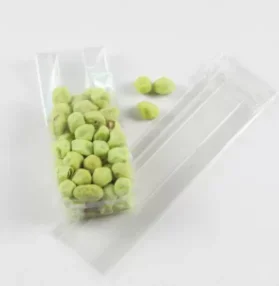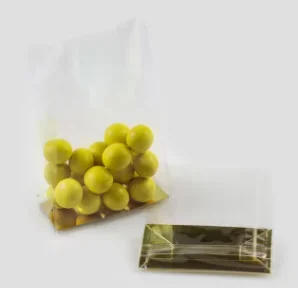Dry goods! How to detect food safety packaging bags!
Food packaging bag is one of the types of food packaging material testing, mainly made of plastic materials, such as polyethene packaging bags, polypropylene packaging bags, polyester packaging bags, polyamide packaging bags, polyvinylidene chloride packaging bags, polycarbonate Ester packaging bags, polyvinyl alcohol packaging bags and other new polymer material packaging bags. It is well known that some toxic and harmful substances may be produced during the reproduction and processing of plastic products, so the quality inspection of food packaging bags, including hygiene inspection, has become an important quality control link.
Many times, when we test food packaging bags, we may not know which standards to test according to. Which standard basis is abolished? Or do not know the specific test items? What specific health indicators are tested? The following is an introduction to our traceability and worry-free for everyone.
Inspection overview-food packaging bag factory
Inspection standards for food packaging bags: The raw materials and additives used in the bags must meet the relevant national quality requirements, and ensure that they will not cause poisoning and other harm to the human body. Degradability test: The degradation types of products can be divided into photodegradable, biodegradable and environmental degradation. If the degradation performance is good, the bag will break, differentiate and degrade by itself under the combined action of light and microorganisms, and eventually become debris, which is accepted by the natural environment and avoids white pollution.

A food packaging bag is a kind of outer packaging design. Such bags are often used in our daily life. In order to store food more conveniently, while maintaining the freshness of food, this kind of packaging bag came into being. It can come into direct contact with food without affecting the quality of the food. The first is hygiene inspection: hygiene is very important in flexible packaging because it is in direct contact with the food we eat every day, so the primary standard for its inspection is hygiene. Including evaporation residue (acetic acid, ethanol, n-hexane), consumption of potassium permanganate, heavy metals, and decolourization test. Evaporation residues reflect the possibility of residues and heavy metals being precipitated when food packaging bags encounter vinegar, wine, oil and other liquids during use. Residues and heavy metals will have adverse effects on human health. In addition, residues will directly affect the colour and aroma of food. , taste and other quality.
Related understanding-food packaging bag factory
The sealing performance of the main packaging bag is high, especially the food packaging bag, which must be completely sealed. If there is an air leak, it will definitely affect the quality of the food inside. If it is easy to determine whether it is leaking or not, just randomly select a packaging bag and add water to it to check if there is any leak. If it leaks out, if there is no leaking water, it will not leak out. Maybe it can be judged by adding gas inside. However, when the gas of the leaking packaging bag enters, it will announce the sound of leaking, which is a good judgment. The sealing of packaging bags is only used very much in the food industry, and it is also a very important aspect.
The inspection standards for food packaging bags should also be inspected for appearance: the appearance of food packaging bags should be smooth, free from scratches, burns, bubbles, oil breakage and wrinkles, and the heat sealing is smooth and free from false sealing. The film shall not have cracks, pores and composite layer separation. No impurities, foreign objects and oil stains or other pollution. Specification inspection: its specifications, width, length, and thickness deviation should be within the specified range. Physical and mechanical performance inspection: that is, the quality of the bag is better. Physical and mechanical properties testing includes tensile strength and elongation at break. It reflects the ability of the product to stretch during use. If the product has poor stretching ability, it will be prone to rupture and damage during use.
How do identify whether plastic packaging bags may be toxic and unsanitary?
1. Detection of plastic packaging bags by using water: Put the plastic bags in the water and observe whether the plastic bags surfaced. The non-toxic plastic bags that surfaced are non-toxic plastic bags, and the ones that submerged in the water are toxic plastic bags.

2. Detection by shaking the plastic packaging bag: a very simple method, grab the plastic bag with your hand and shake it a few times, the sound is the kind of crisp and clean non-toxic plastic bag if the sound is that The dull voice indicated that it was a poisonous plastic bag.
3. Detection by burning plastic bags: non-toxic plastic bags are easy to burn. If you observe carefully, you will find that the colour of the flame when burning is yellow at the tip and cyan in part, and it will fall like a candle burning. , has a paraffin smell. The poisonous plastic bag is not easy to burn, it will go out immediately after leaving the fire source, the tip is yellow and the part is green, and it will be in a brushed state after burning.
4. Detect the plastic packaging bag by the colour of the plastic packaging bag itself and the touch of the plastic bag: the non-toxic plastic bag is milky white or colourless and transparent, and it feels lubricating with the hand; the colour of the toxic plastic bag is more turbid It is mainly yellow, red and black, and it feels a little sticky to the touch.
Find Fast Sincere for custom-made plastic bags. Plastic bags are widely made of biodegradable materials such as corn starch, PLA, PBAT, and environmentally friendly water-based inks, which are harmless to the human body and pollution to the environment. Of course, we will not stop there. The food packaging bag factory invests 5% of its turnover every year for long-term research and development of equipment and plastic bag customization technology updates. The products we include are cello bags, toast bags, gusset bags and more.








Comments (0)